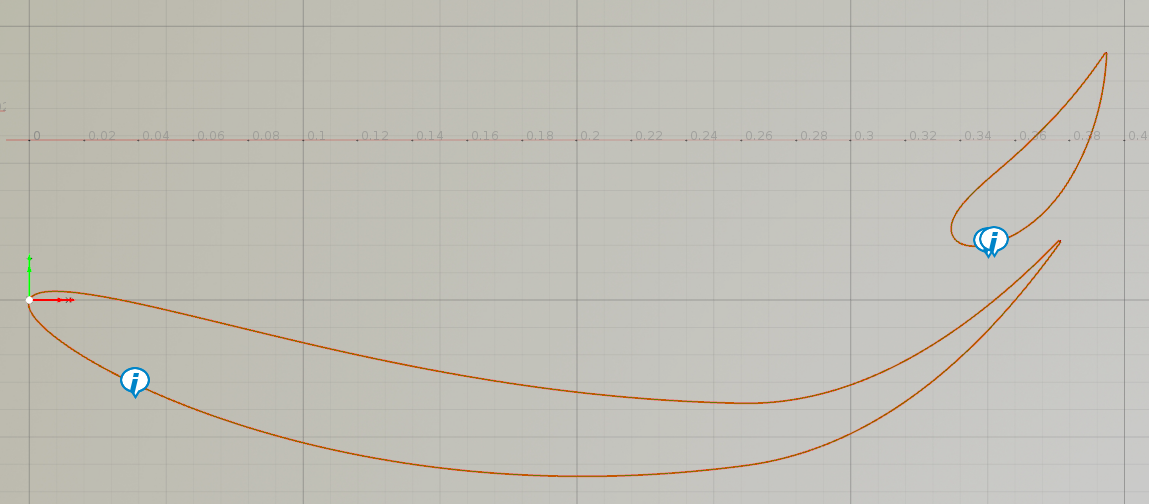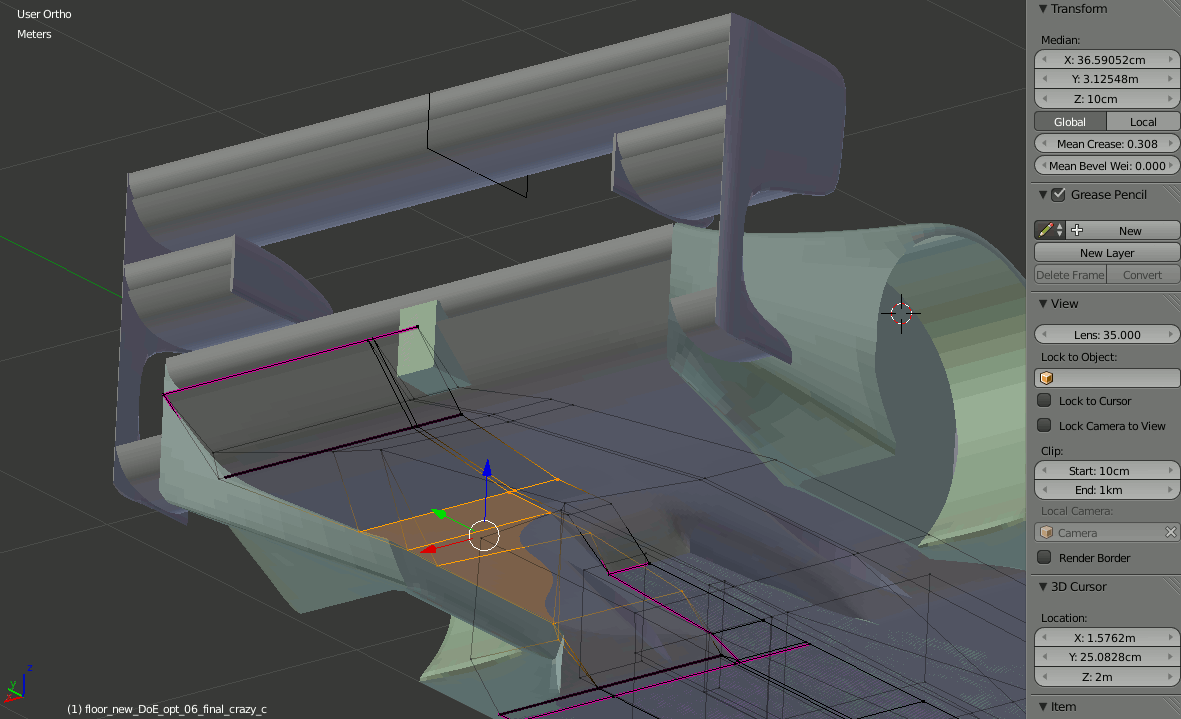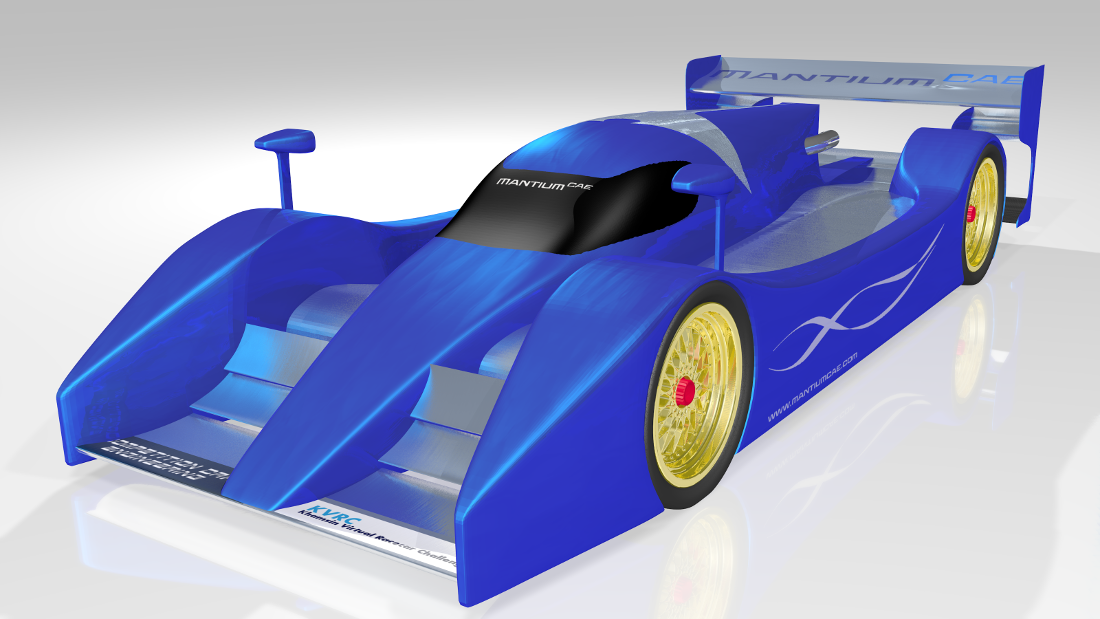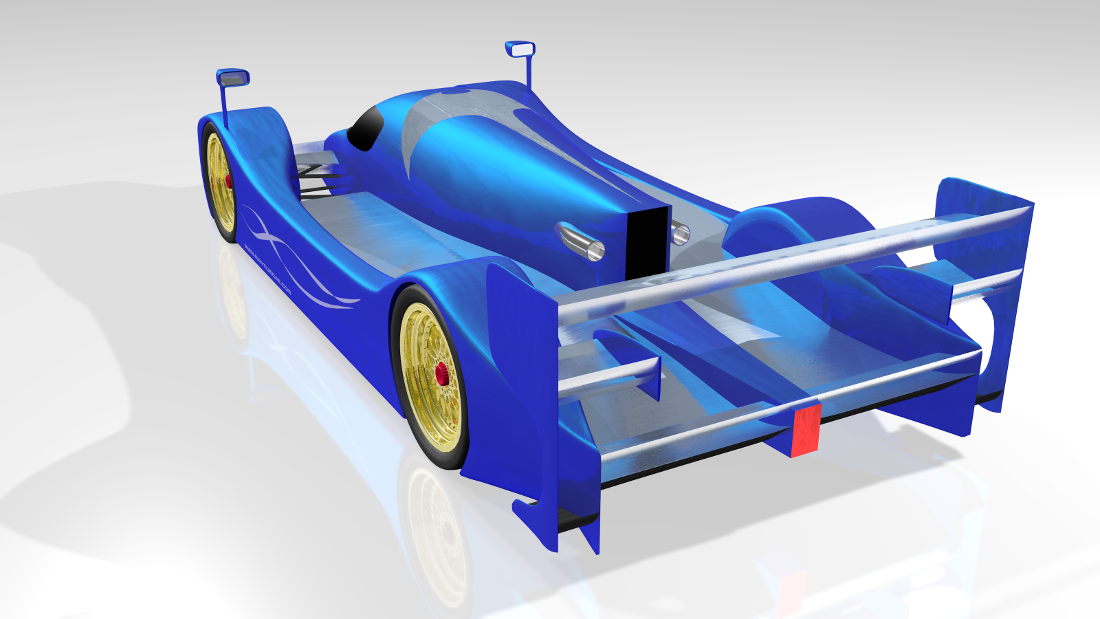After MantiumRay, the virtual racing team of MANTIUMCAE, scored the predicted third position in the last race of the KVRC challenge the time had come to use some more sophisticated methods to develop the car.
As the challenge is a great environment to learn and test new software. The car was modeled using Blender. While Blender does not replace a professional CAD software it has proven to be a good tool to create new designs. It is also useful to create nice renders of the car.
For the upcoming race which will again be held at the Nürburgring the car got at least some of the treatment it needed. For this CAESES was used. CAESES is a software that can create parametrized geometries, execute DoEs and optimizations and is also great in analyzing the results.

Rear wing profile
First a new rear wing was created to fully comply with the KVRC regulations. This meant that a quite thick rear element was needed. While this in general does not aid aerodynamic performance, a wing was found that was slightly better than the previously used design. This new design can be seen below:
To get a much better understanding of how the entire car works CAESES was used to run a design exploration. For this the Blender model was prepared by creating vertex groups which would could then easily be accessed. Also a python script was created to move these groups and then export the new geometries. CAESES accessed the values responsible for the movements and executed the script. The CFD setup was similar to the one used in the challenge. Mainly it was coarsened up to improve the speed. The report exported by CAESES can be downloaded here: MantiumRAY_DoE. Most design variables and responses should have somewhat meaningful names.
After that a small optimization was run. The results of that where a bit surprising. An additional optimization was then run only focusing on the diffuser. The following animation shows some of the parametrization of this part:

Diffuser morphing in Blender
Usually a diffuser should steadily increase the cross section to expand the airflow. In this case the surprising result of the optimization was to have the rear end taking a small bump downwards before it fully expands. Manually creating diffusers fixing this did not show any improvements. If this is a solution that works in real life or is due to the rather coarse CFD meshes used in the challenge has not been analyzed until now. The following image shows the airflow and highlights a cut through the diffuser with a pink line:

CFD results under body
While the car still does not quite reach the performance levels needed to win the next race the optimization showed some nice results:
- Using CAESES was not very difficult. Also it proved reliable.
- Blender can be hooked up with optimization software to morph geometries.
- The level of performance which can be achieved using optimization techniques depend on the basis. As the overall concept of the car is just not good enough the reached levels of down force will not be enough to win the next race.
- Optimization can deliver non-intuitive results. The floor would not be found in any book about race car aerodynamics or created with common sense, and yet in this environment it seems to work.
The following two images show the car for the next race:

Front view MantiumRacer

Rear view MantiumRacer
The next results should be released soon. Lets hope for a strong position for MANTIUMRay. The next races will then require a very different aerodynamic setup. So this will be the last race of the car in the current configuration. A completely new design will have to be developed. Depending on time and resources, maybe using DoEs and optimizations will help to create some victories.